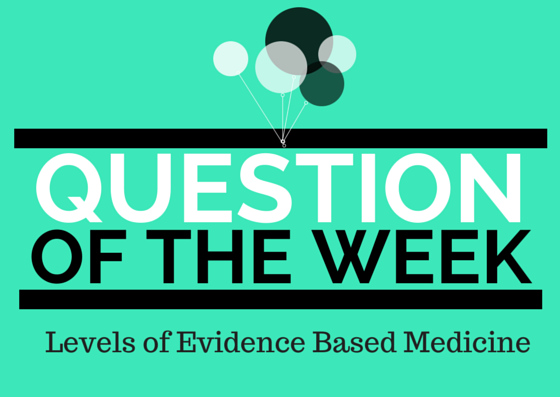In this week’s practice question, we cover the levels in evidence based medicine. This topic is important because ideally, every physician should make decisions based on the most-current and best research available. But combing through thousands of studies, trials, and analyses is problematic.
Rather, to integrate the newest guidelines and recommendations, we can use Clinical Decision Support Systems. Clinical Decision Support Systems can include the outputs of EBM and integrate them into their rules engines. It is here that clinical informaticists become responsible for taking this “human” knowledge and transforming it into knowledge a computer can process and present at the appropriate times.
Practice Question
Which of the following is considered to be the best type of evidence on which to base clinical decisions?
a. RCTs
b. Expert Opinions
c. Case-Control Studies
d. Systematic Reviews
A. The gold standard for clinical trials, randomized control trials (RCTs) randomly allocate the people being studied to one or other of the different treatments under study.
B. Expert opinion is the lowest level of acceptable evidence but, in the absence of other research, it may be acceptable.
C. Case-control studies are observational studies in which two existing groups differing in outcome are identified and compared on the basis of some supposed causal attribute.
D. While Randomized Control Trials are very high on the levels of evidence, systematic reviews identify, appraise, select and synthesize all evidence relevant to the research question. Systematic reviews can also review RCTs and are therefore extremely helpful in evidence-based medicine.
Answer & Explanation
Systematic reviews are considered the “highest” level on the levels of evidence. Therefore the correct answer is D – systematic reviews.
References
For more information on the levels of EBM check out the following resources:
Oxford Centre for Evidence-Based Medicine
Burns PB, Rohrich RJ, Chung KC. The Levels of Evidence and their role in Evidence-Based Medicine. Plastic and reconstructive surgery 2011;128(1):305-310. doi:10.1097/PRS.0b013e318219c171. http://www.ncbi.nlm.nih.gov/pmc/articles/PMC3124652/
